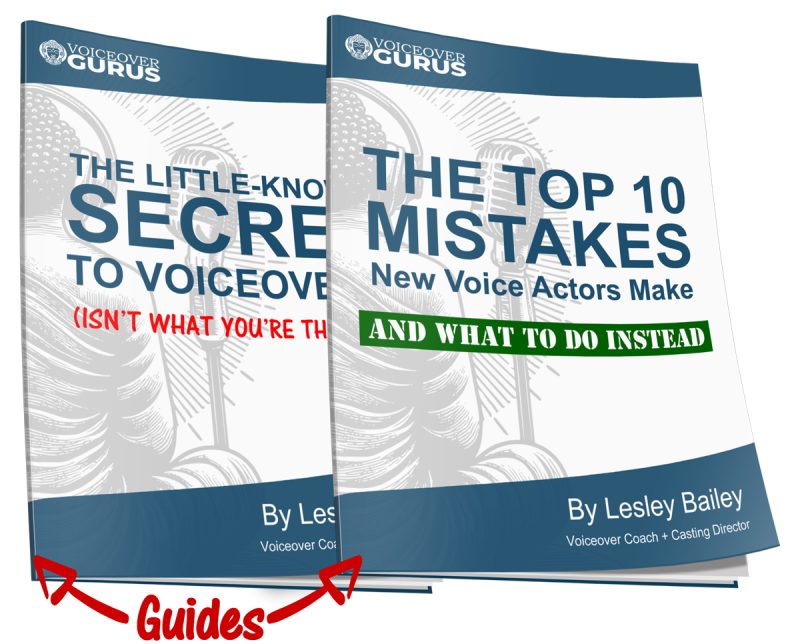Script analysis isn’t just for stage or screen actors—it’s a critical skill for any working voice actor. Whether you’re voicing a national TV commercial, a corporate explainer, or a character in a mobile game, your ability to decode the writer’s intention will shape how bookable you are.
In this post, we’ll show you how to break down your voiceover scripts step-by-step, so you can connect emotionally, stay true to the brand, and own the read.
Why Script Analysis Matters More Than You Think
Too many voice actors jump straight into performance mode without asking why the script was written the way it was. But copy isn’t just words—it’s strategy.
Great voice actors are detectives.
They look for:
- What the client wants the audience to feel
- What’s really being promised or revealed
- Which words are carrying the emotional weight
Let’s dive into the process that makes a voiceover script come alive.
Step-by-Step Script Analysis Guide for Voice Actors
✅ Step 1: Understand the Story
Every script has a context, even if it’s not written out. Your job is to imagine the scene.
Ask yourself:
- What’s the setting?
- What happened just before this began?
- What emotional state am I in?
Example: If you’re narrating a travel ad, imagine the moment someone’s booking a long-awaited vacation.
✅ Step 2: Clarify the Message
What’s the point of this script? Is it:
- Selling a product?
- Building trust?
- Offering comfort?
- Making someone laugh?
Exercise: Try summarizing the entire script in one sentence.
“This is about showing the audience that switching banks can be stress-free.”
This becomes your emotional anchor.
✅ Step 3: Find the Emotional Tone
Every script has a tone—sometimes it’s cheerful, sometimes calming, or quietly confident. Even tech specs or compliance disclaimers need the right tone.
Clues to look for:
- Adverbs/adjectives: “effortlessly,” “finally,” “genuine”
- Punctuation: Ellipses suggest reflection, exclamation marks signal energy
- Brand language: Bold or minimalist?
Test your script through different emotional filters until you find one that fits naturally.
✅ Step 4: Identify the Power Words
Power words are where meaning lives. They drive emphasis, rhythm, and emotional impact.
How to find them:
- Read each line and ask: “If I could only emphasize one word, which one unlocks the meaning?”
- Look for contrast words like: but, now, finally, instead
- Find benefit-heavy words and pain points
Example:
“Now there’s a solution that actually works.”
Key power words: now, solution, actually, works
Mark them in your script.
✅ Step 5: Define the Audience
Don’t talk to “everyone.” That flattens your read. Pick a very specific listener.
Build a mini profile:
- Who are they? (Name, age, job, mood)
- What do they need emotionally right now?
- How close are they to you?
Are you their friend? A mentor? A brand they trust?
✅ Step 6: Know Who You Are
Your role changes everything. Are you:
- An authority? (Doctor, instructor)
- A peer? (Friend, colleague)
- A quirky sidekick?
Make a choice and embody it. The energy shifts when you own your place in the scene.
✅ Step 7: Shape the Pacing and Rhythm
Scripts aren’t just words—they have a beat. That beat depends on:
- How personal the message is
- The emotional state
- The length of the spot
Try this:
- Mark natural pauses
- Read aloud and record yourself
- Listen back for any “rushed” or “flat” moments
✅ Step 8: Own it Your way
Read the script and don’t necessarily follow the writing verbatim. At the practice stage use words you resonate more with if it’s organic. Find your way to the most authentic emotional place on your terms and language first and then you can read the words exactly as is once you’re there in the right tonal place.
✅ Step 9: Decode the Direction
Client direction like “conversational” or “natural” can be vague.
Here’s what it usually means:
- “Conversational” = sound like a real person, not a performer
- “More energy” = be more present, not necessarily louder
- “Friendly but authoritative” = approachable + grounded confidence
Coaching helps bridge the gap between vague notes and actionable changes. We can help with that here.
✅ Step 10: Own the Copy
Once you’ve done all the prep—let it go. Now it’s about trust.
You know the tone, the audience, the key words. Now bring:
- Presence
- Ease
- Commitment
Own it like you wrote it. That’s where real booking power lives.
Bonus Tools for Mastery
Try a “What If” Game
Before you record, ask:
- What if I were telling a friend this in secret?
- What if I were annoyed?
- What if I were proud?
This helps you unlock hidden emotional layers.
Keep a Script Journal
After each audition or gig:
- Note the message
- Emotional tone
- What worked
- What didn’t
This practice builds your intuition over time.
Read Better Writing
Strong readers are great analysts.
Start with The Actor and the Target by Declan Donnellan—an industry classic that sharpens emotional focus and intention.
Final Thoughts
Script analysis isn’t just prep—it’s your superpower. It connects your performance to what the client truly wants and allows your read to feel lived in, not performed.
When you start seeing voiceover scripts as little stories, each with a unique audience and tone, you stop sounding like every other actor reading off the page—and you start booking like a pro.Want to get hands-on practice with all of this?
We offer private coaching to help you analyze, interpret, and own any script—whether it’s a one-liner or a full eLearning module. Let’s bring your reads to life.
Script Analysis Checklist
- ✅ What’s the story?
- ✅ What’s the message?
- ✅ What’s the emotional tone?
- ✅ Who are you talking to?
- ✅ Who are you in the scene?
- ✅ What are the power words?
- ✅ How does the script flow?
- ✅ Does your tone match the brand?
- ✅ Are you responding to direction?
- ✅ Are you owning it?
Want More Like This?
Subscribe to our blog for more voiceover tips, emotional performance tools, and industry insights that help you grow from curious to confident in your VO journey.


 Hi! I’m Lesley Bailey. I’m an award-winning Casting Director, Voiceover Coach, Demo Producer, and Consultant with over 30 years “in the trenches”. I love helping voice actors bring scripts to life with authenticity and confidence.
Hi! I’m Lesley Bailey. I’m an award-winning Casting Director, Voiceover Coach, Demo Producer, and Consultant with over 30 years “in the trenches”. I love helping voice actors bring scripts to life with authenticity and confidence.